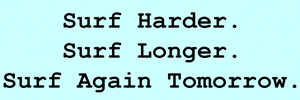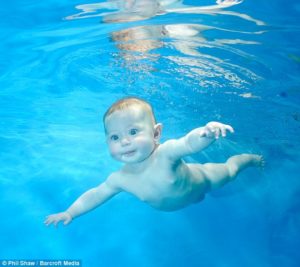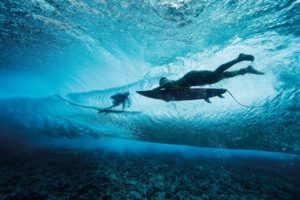[sam_pro id=”1_45″ codes=”true”]









Taken from Spencer Ash (The Inertia) and adapted as an alternative to evolutionary theory…
Since this review will be somewhat technical, lets start with this:
Dear Creator,
You shaped me first inside, then out; You formed me in my mother’s womb. I thank you; You are breathtaking! Body and soul, I am marvelously made. You know me inside and out; You know exactly how I was made, bit by bit and how I was sculpted from nothing into something. Like an open book, You watched me grow from conception to birth; all the stages of my life are spread out before You (The Message).
So, given that we are amazing, its no surprise that the diving reflex, as well as the swimming reflex, are inherent parts of human nature and can be observed in newborns and infants when placed in an aquatic environment. In some ways, we are inherently connected to our ocean dwelling friends.
Our diving reflex is similar with some of the features of ocean dwelling mammals. It’s triggered when a mammal’s face comes in contact with or is submerged in cool water. When this occurs, receptors are activated within the nasal and sinus cavities as well as areas in the face connected to the trigeminal nerve. Information that the face has encountered water is transmitted to the brain and the autonomic nervous system through the vagal nerve, resulting in the immediate closure of the airway as well as a number of physiological changes to optimize the body’s conservation of oxygen.
For surfers, a serious hold-down can be a serious situation and aspects of our diving reflex automatically kick in. Here are the changes that begin upon initiation of the diving reflex:
1. A reduction of the heart rate (bradycardia) by approximately 10-25% occurs immediately upon facial contact with water (even simply splashing the face with water will achieve this effect). The slowing of the heart rate reduces the rate of oxygen entering the bloodstream allowing the body to conserve oxygen and for vital organs to more efficiently use it. During hold-downs, the result of bradycardia is an extension of time spent underwater.
2. Peripheral vasoconstriction (the narrowing of blood vessels to reduce blood flow through the muscular contraction of the blood vessel walls) which takes place with slight increases in atmospheric pressure resulting from immersion in water. Capillaries in the extremities (fingers, toes, hands, feet, arms, and then legs) begin to constrict which restricts blood flow to those areas and directs it towards the vital organs, which include the heart, lungs, and brain – all of which are fueled by significantly higher amounts of oxygen than other peripheral organs.
3. Blood shift: upon diving the atmospheric pressure increases with depth where according to Boyle’s law, the lungs and the air contained inside of them will compress as the we descend beneath the surface. Due to the peripheral vasoconstriction initiated by the diving reflex, blood will be shunted from the extremities into the vital organs and thoracic (chest) cavity resulting in a higher percentage of blood volume in this area that will occupy the space created by the compression of the air inside of the lungs. Blood, which is similar in many forms to ocean water will not be able to be compressed due to its liquid/fluid nature and will retain its volume regardless of the depth that a diver (or surfer) may reach. Since the blood fills the empty space caused by the compression of air at depth (the result of a pressure differential in the lungs), the lungs will not collapse due to the increased atmospheric pressures experienced. Blood shift also occurs in the other organs of the body in a similar manner and with the same result.
4. Splenic contraction: during intentional dives, as part of the diving reflex, the spleen will experience contractions when a diver is subjected to the atmospheric pressures of depth. Typically, the spleen acts as a reservoir for large volumes of blood which are circulated through it and in conjunction with the volumes of blood required by the blood shift discussed above, the spleen will contract and subsequently release blood into the circulatory system. The additional volume of blood that enters the body as a result of the splenic contraction will not only increase the amount of oxygen available to the system but also help to increase the supportive fluid capabilities of the blood in the body’s lungs and other organs.
In summarizing, the mammalian diving reflex allows us to dive (or be driven) underwater for extended periods of time. In response to facial contact and submersion in water, the diving reflex will be activated resulting in a decrease in heart rate (bradycardia) which is magnified by states of apnea and increased atmospheric pressure, the diversion of blood from the extremities to the thoracic cavity (peripheral vasoconstriction), the movement of blood into the lungs and other vital organs to prevent collapse at depth (blood shift), and splenic contractions with aid in the blood shift at greater depths and pressures. As surfers during hold-downs and involved in aspects similar to freediving, the mammalian dive reflex is essential to being able to remain underwater for extended periods of time and it can be strengthened over time to improve diving performance through experience and intentional/directed practice.










